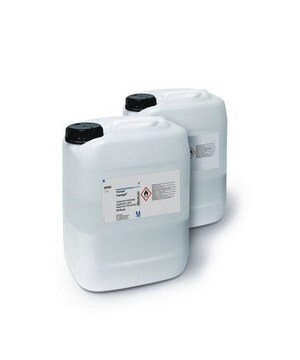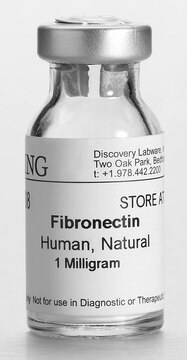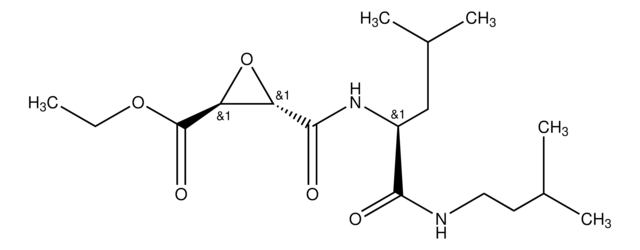推荐产品
生物源
rabbit
品質等級
抗體表格
affinity isolated antibody
抗體產品種類
primary antibodies
無性繁殖
polyclonal
純化經由
affinity chromatography
物種活性
mouse
物種活性(以同源性預測)
canine (based on 100% sequence homology), canine, bovine, opossum, horse, rat, pig
技術
immunohistochemistry: suitable (paraffin)
western blot: suitable
NCBI登錄號
UniProt登錄號
運輸包裝
wet ice
目標翻譯後修改
unmodified
基因資訊
human ... TBR1(10716)
一般說明
T-box brain protein 1 (UniProt: Q64336; also known as T-brain-1, TBR-1, TES-56) is encoded by the Tbr1 gene (Gene ID: 21375) in murine species. Tbr1 is a homodimeric nuclear protein that serves as a transcriptional repressor and is involved in multiple aspects of cortical development, including neuronal migration, laminar and areal identity, and axonal projection. As transcriptional repressor of FEZ Family Zinc Finger 2 (FEZF2), it blocks the formation of the corticospinal (CS) tract from layer 6 projection neurons, thereby restricting the origin of CS axons specifically to layer 5 neurons. Its T-box DNA binding domain is localized in amino acids 213-393. Its expression is observed in developing and adult cerebral cortex and in olfactory bulbs. It is detected around day 10 of embryonic development in the preplate and at day 12.5 in the cortical plate. It is highly expressed in glutamatergic early-born cortical neurons. Tbr1 null mice exhibit severe defects of frontal cortex and layer 6 differentiation. (Ref.: Han, W., et al. (2011). Proc. Natl. Acad. Sci. USA. 108(7); 3041-3046; Bedogni, F., et al (2010). Proc. Natl Acad. Sci. USA. 107(29); 13129-13134; Hevner, RF., et al. (2001). Neuron. 29(2); 353-366).
特異性
This rabbit polyclonal antibody detects T-box brain protein 1 (Tbr1).
免疫原
KLH-conjugated linear peptide corresponding to 18 amino acids from the N-terminal region of mouse T-box brain protein 1 (Tbr1).
KLH-conjugated linear peptide corresponding to mouse Tbr1 near the N-terminus.
應用
Quality Control Testing
Evaluated by Immunohistochemistry (Paraffin) in Mouse brain tissue sections.Immunohistochemistry (Paraffin) Analysis: A 1:400 dilution of this antibody detected Tbr1 in Mouse cerebral cortex and cerebellum tissue sections.
Tested Applications
Western Blotting Analysis: A 1:500 dilution from a representative lot detected Tbr1 in Mouse fetal brain tissue lysate.Note: Actual optimal working dilutions must be determined by end user as specimens, and experimental conditions may vary with the end user.
Evaluated by Immunohistochemistry (Paraffin) in Mouse brain tissue sections.Immunohistochemistry (Paraffin) Analysis: A 1:400 dilution of this antibody detected Tbr1 in Mouse cerebral cortex and cerebellum tissue sections.
Tested Applications
Western Blotting Analysis: A 1:500 dilution from a representative lot detected Tbr1 in Mouse fetal brain tissue lysate.Note: Actual optimal working dilutions must be determined by end user as specimens, and experimental conditions may vary with the end user.
品質
Evaluated by Immunohistochemistry in mouse frontal cortex tissue.
Immunohistochemistry Analysis: 1:400 dilution of this antibody detected Tbr1 in mouse frontal cortex tissue.
Immunohistochemistry Analysis: 1:400 dilution of this antibody detected Tbr1 in mouse frontal cortex tissue.
標靶描述
~76 kDa observed; 73.94 kDa calculated. Uncharacterized bands may be observed in some lysate(s).
外觀
Affinity purified
Purified rabbit polyclonal antibody in buffer containing 0.1 M Tris-Glycine (pH 7.4), 150 mM NaCl with 0.05% sodium azide.
儲存和穩定性
Recommended storage: +2°C to +8°C.
分析報告
Control
Mouse frontal cortex tissue
Mouse frontal cortex tissue
其他說明
Concentration: Please refer to the Certificate of Analysis for the lot-specific concentration.
免責聲明
Unless otherwise stated in our catalog or other company documentation accompanying the product(s), our products are intended for research use only and are not to be used for any other purpose, which includes but is not limited to, unauthorized commercial uses, in vitro diagnostic uses, ex vivo or in vivo therapeutic uses or any type of consumption or application to humans or animals.
未找到合适的产品?
试试我们的产品选型工具.
儲存類別代碼
12 - Non Combustible Liquids
水污染物質分類(WGK)
WGK 1
閃點(°F)
Not applicable
閃點(°C)
Not applicable
Epigenomic Analysis of Multilineage Differentiation of Human Embryonic Stem Cells.
Xie, Wei, et al.
Cell (2013)
J Ni et al.
International journal of molecular medicine, 35(6), 1755-1760 (2015-04-08)
Knee osteoarthritis (OA) is the most prevalent type of OA and the cytokine, oncostatin M (OSM), may contribute to the pathogenesis of OA. However, the exact role of OSM in the development of knee OA and the underlying mechanisms are
Xue Li et al.
Cerebral cortex (New York, N.Y. : 1991), 30(7), 3960-3976 (2020-02-03)
De novo microdeletion of chromosome 2p15-16.1 presents clinically recognizable phenotypes that include mental retardation, autism, and microcephaly. Chromosomal maintenance 1 (CRM1) is a gene commonly missing in patients with 2p15-16.1 microdeletion and one of two genes found in the smallest
Christine Sauerland et al.
Cerebral cortex (New York, N.Y. : 1991), 28(1), 145-157 (2017-12-19)
A hallmark of mammalian brain evolution is the emergence of the neocortex, which has expanded in all mammalian infraclasses (Eutheria, Marsupialia, Monotremata). In eutherians, neocortical neurons derive from distinct neural stem and progenitor cells (NPCs). However, precise data on the
Ilaria Favicchia et al.
Frontiers in molecular neuroscience, 14, 663598-663598 (2021-09-24)
Tbx1 mutant mice are a widely used model of 22q11.2 deletion syndrome (22q11.2DS) because they manifest a broad spectrum of physical and behavioral abnormalities that is similar to that found in 22q11.2DS patients. In Tbx1 mutants, brain abnormalities include changes
我们的科学家团队拥有各种研究领域经验,包括生命科学、材料科学、化学合成、色谱、分析及许多其他领域.
联系技术服务部门








